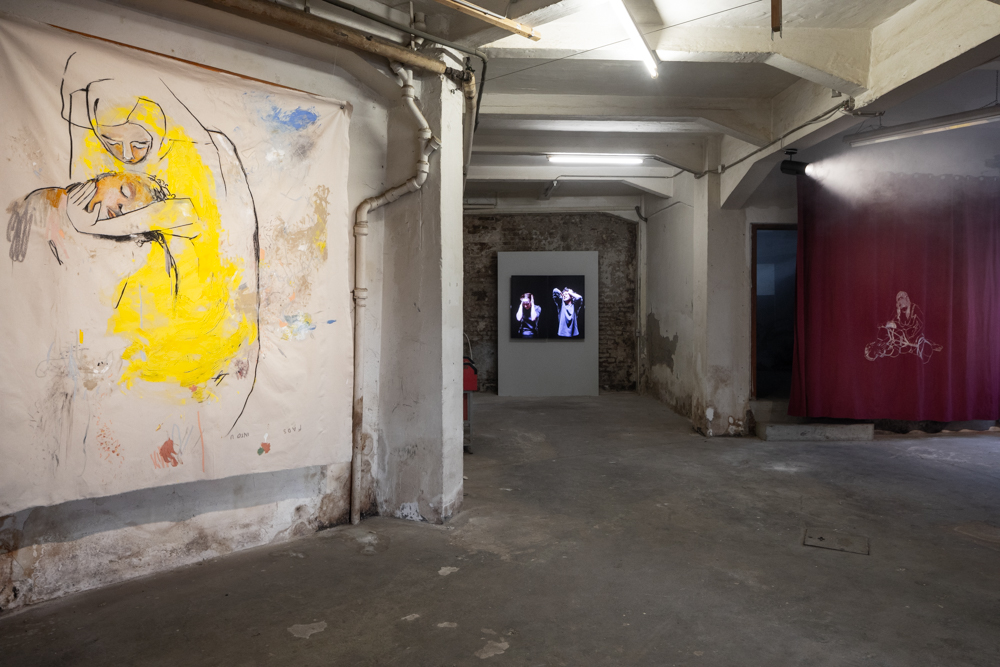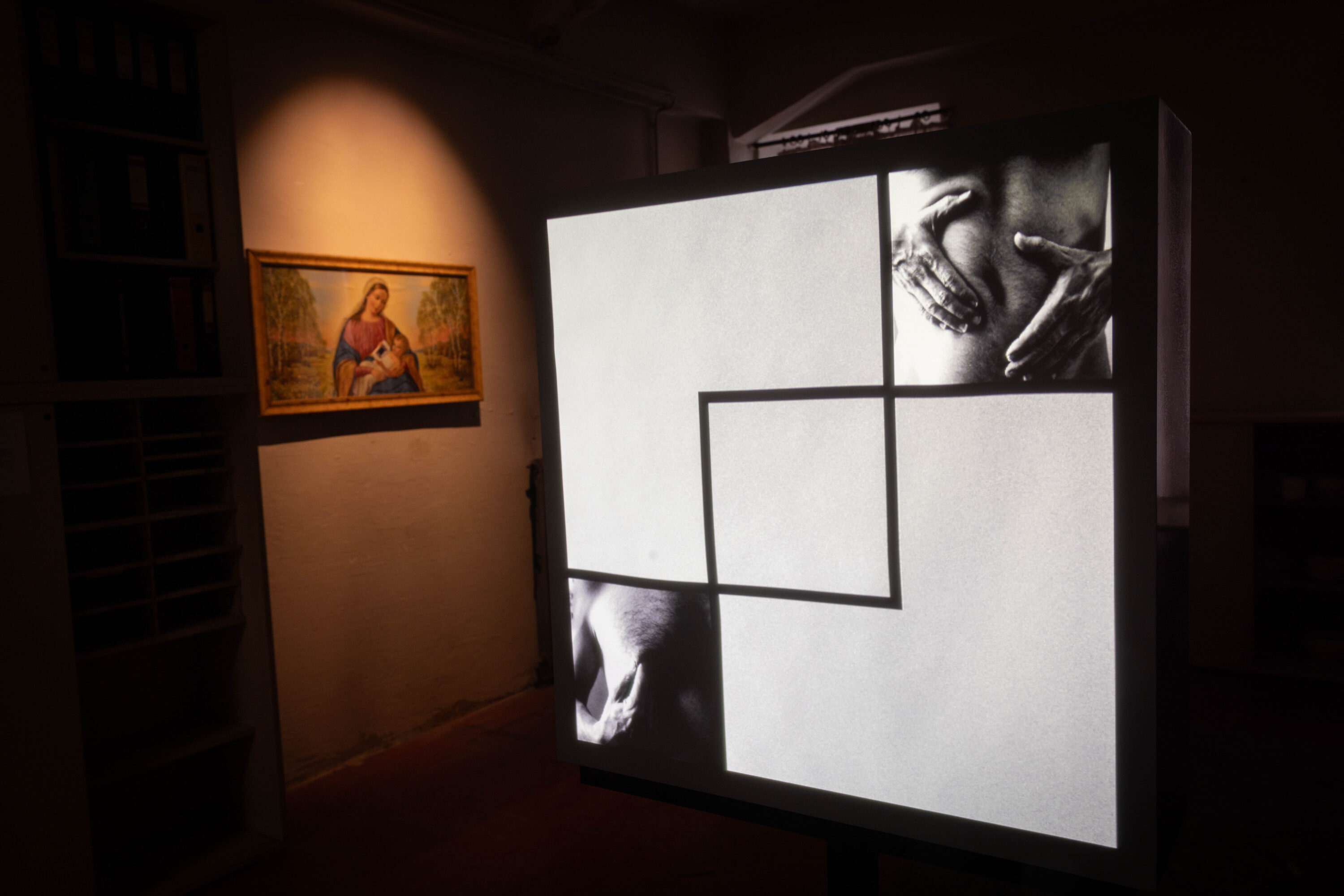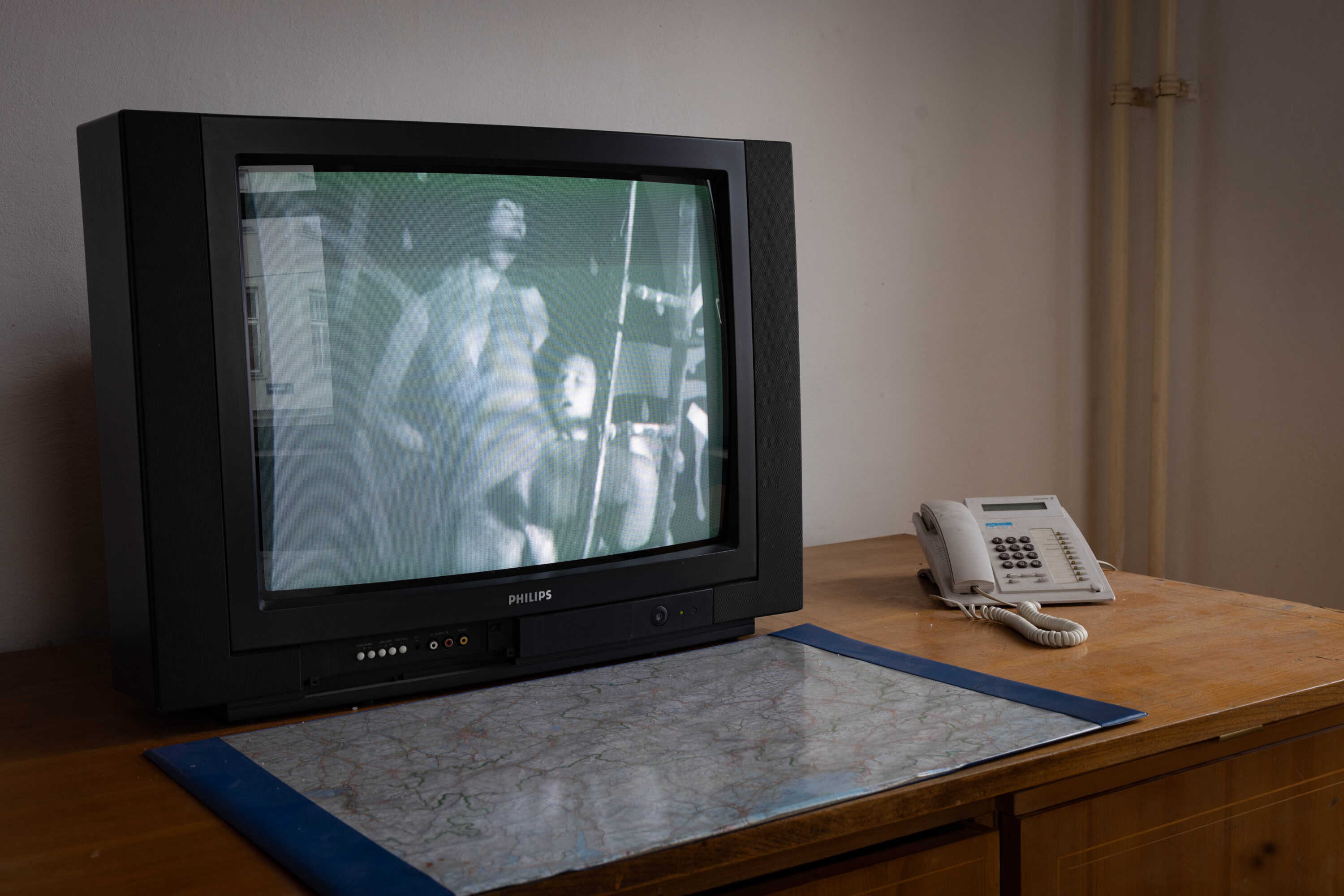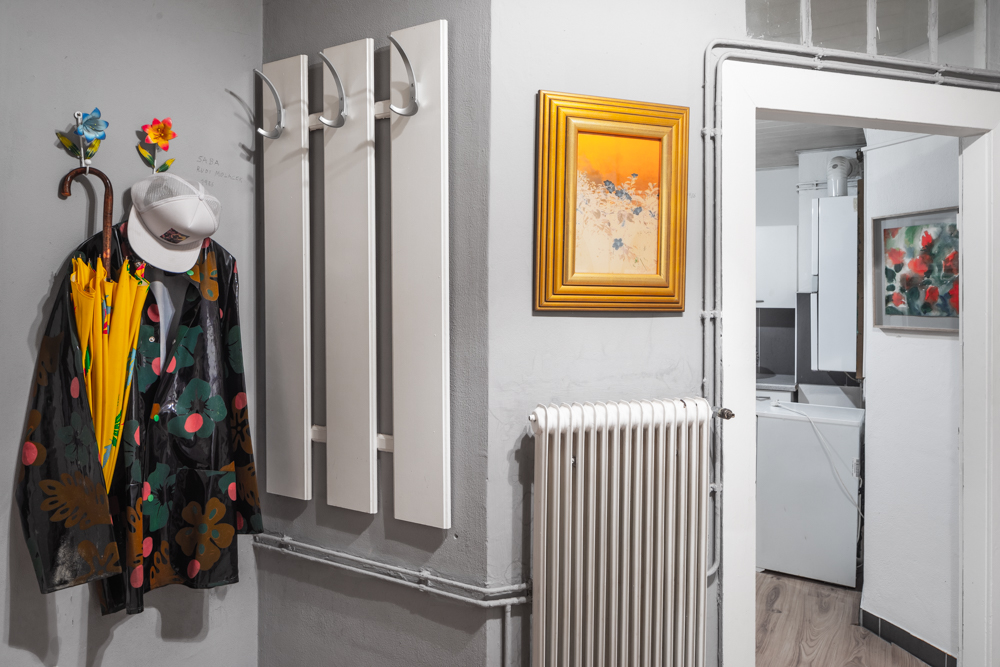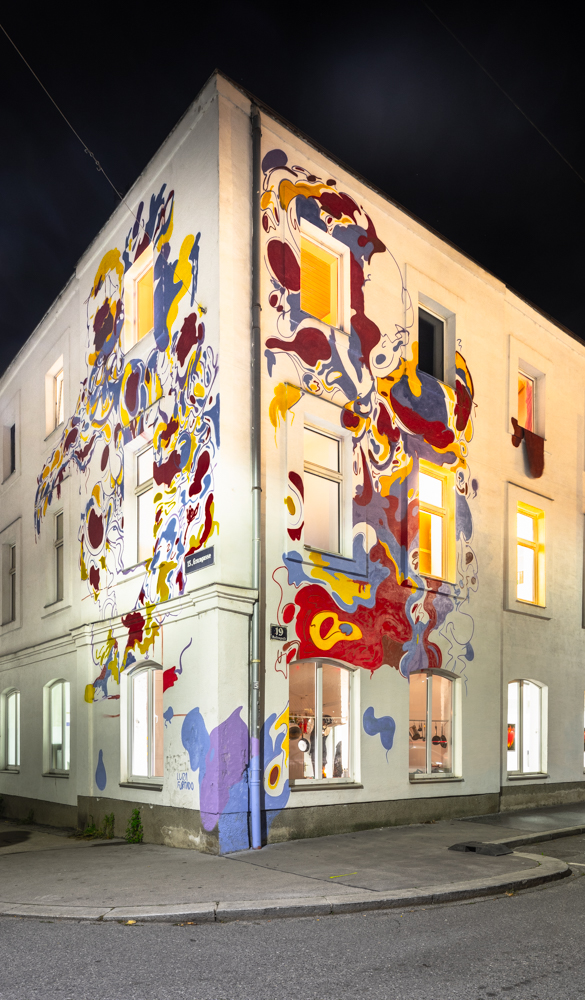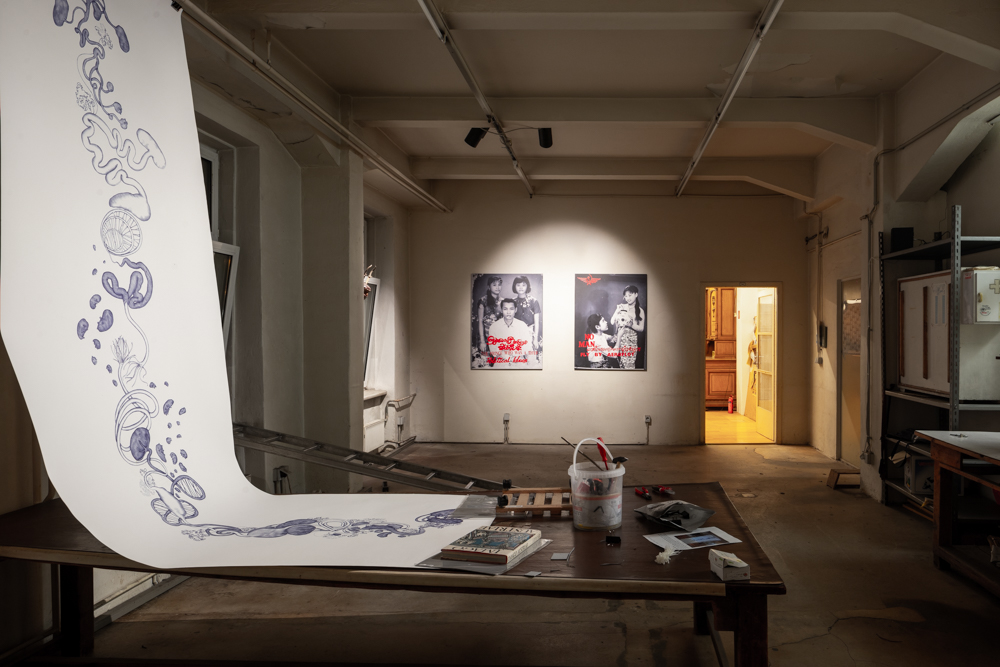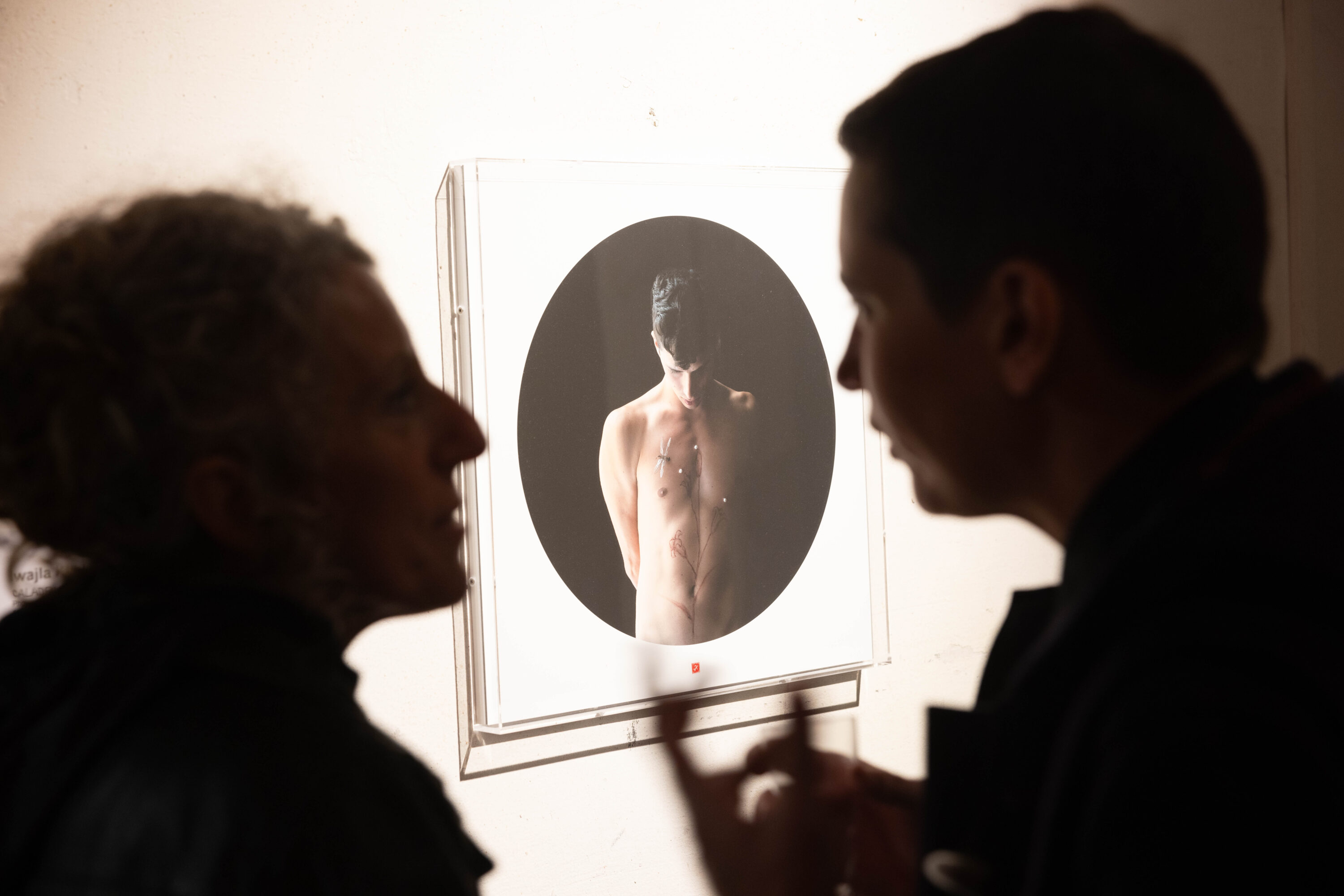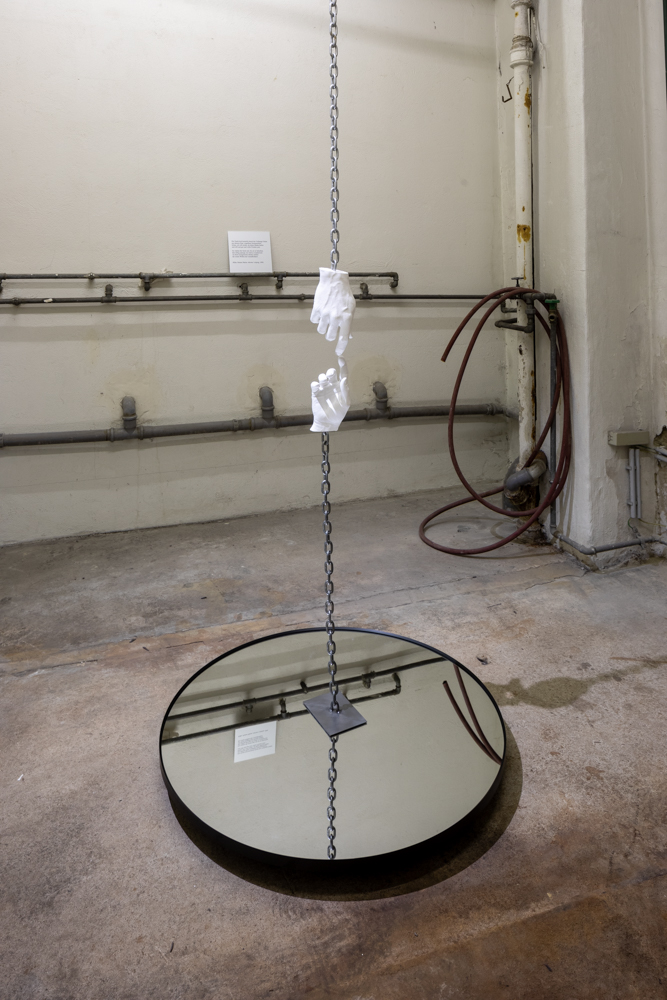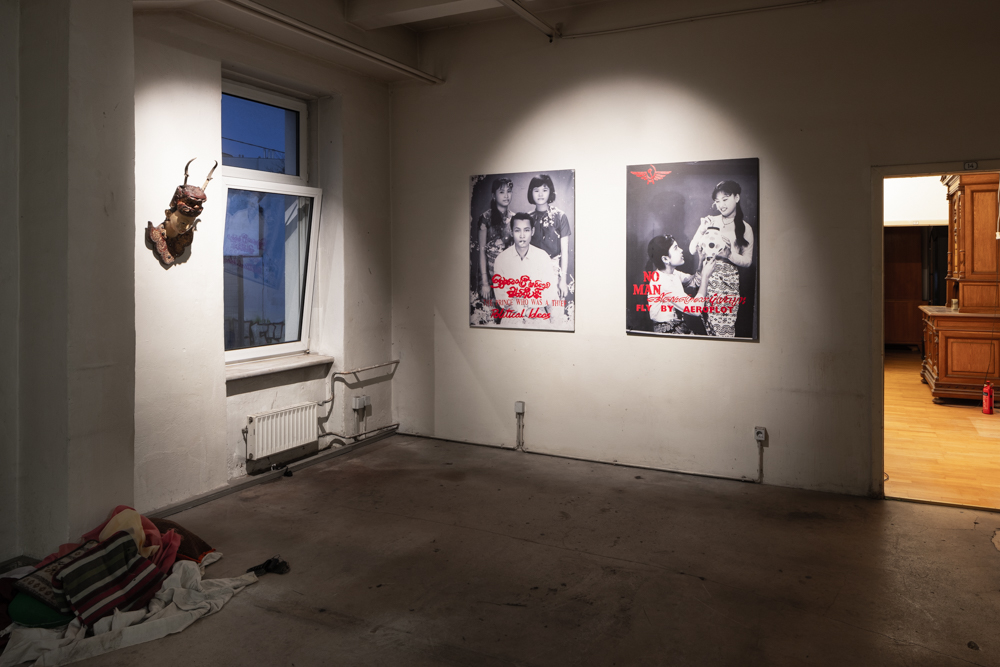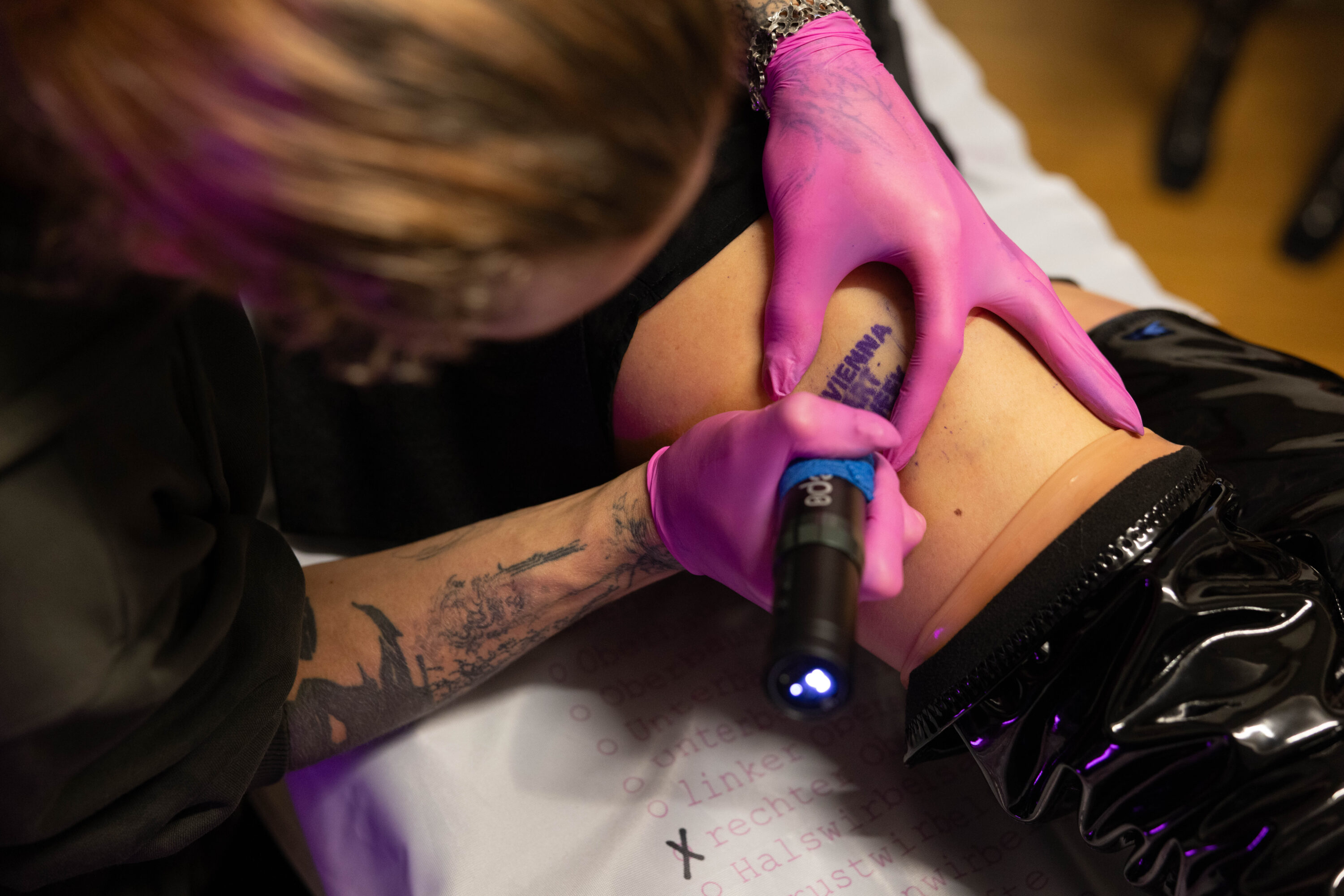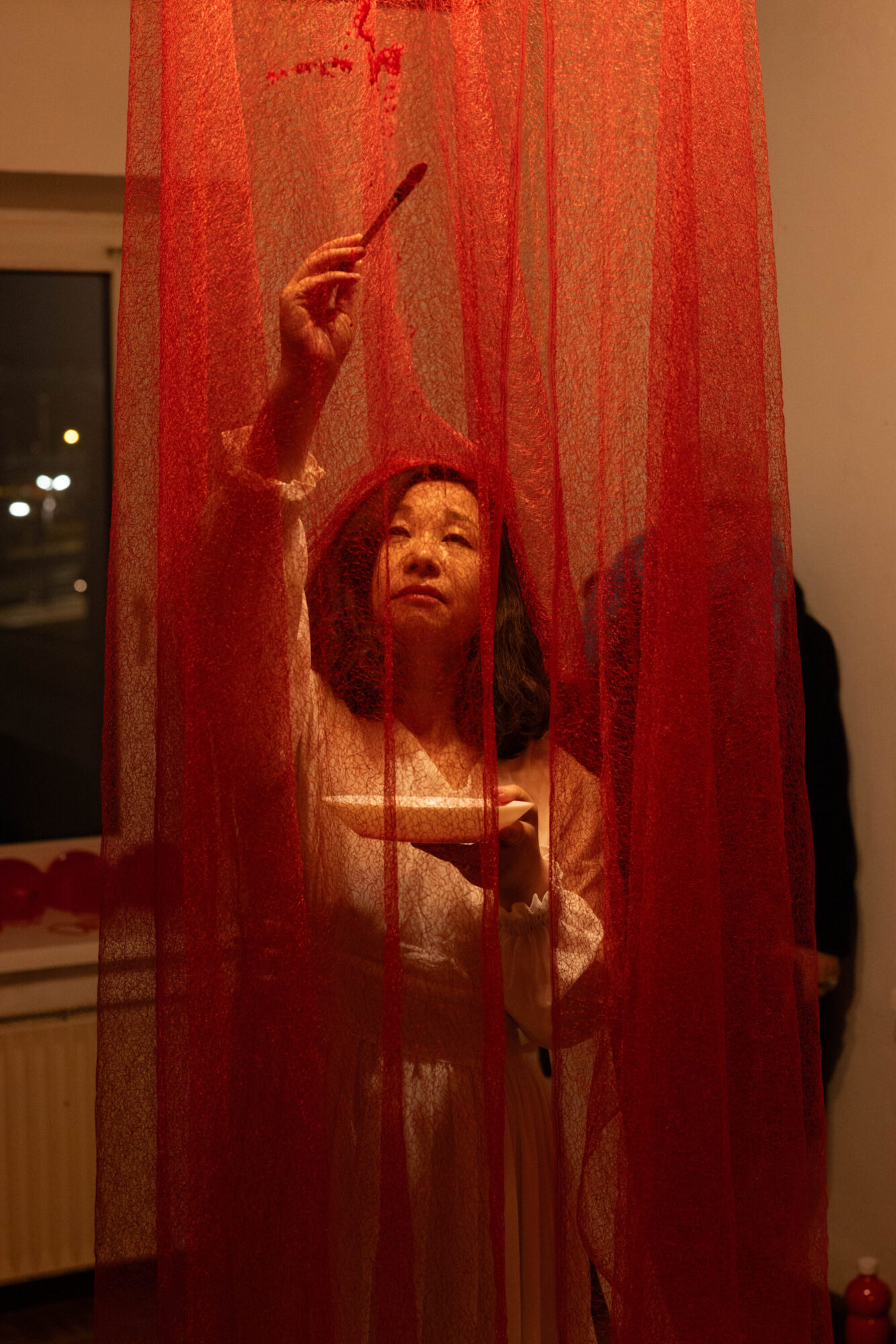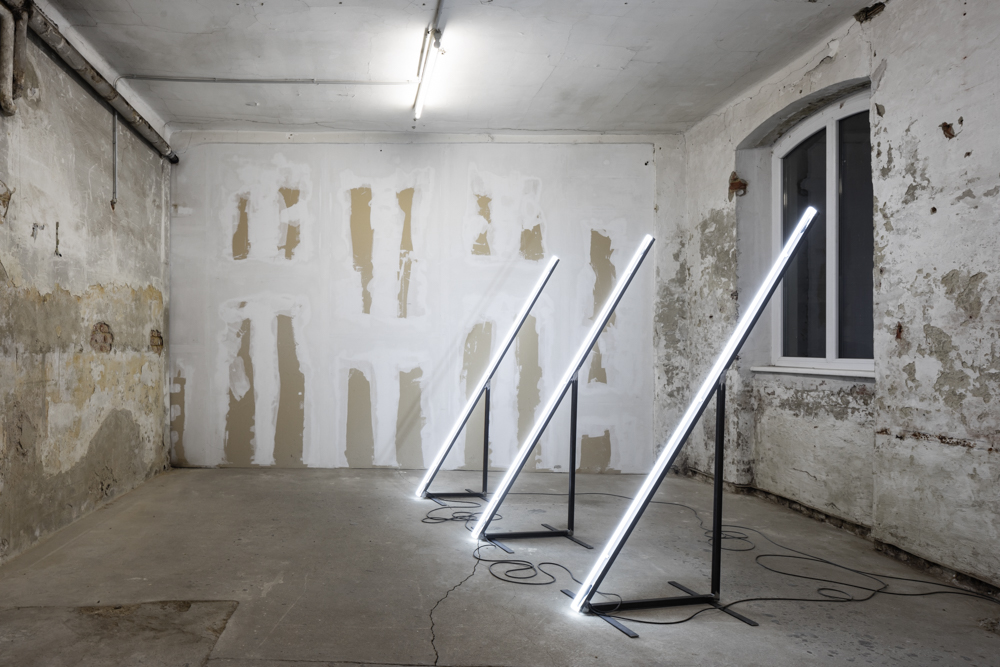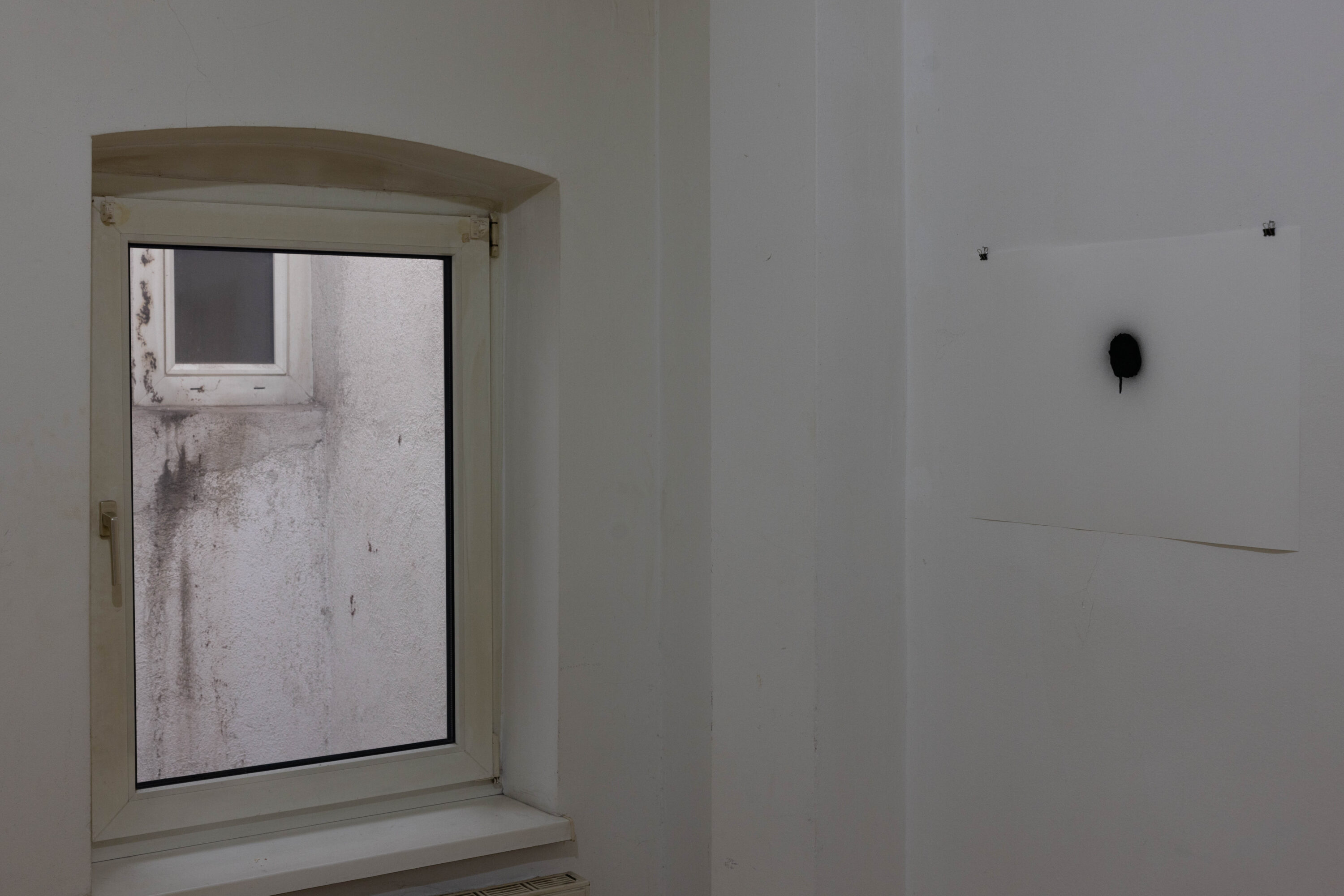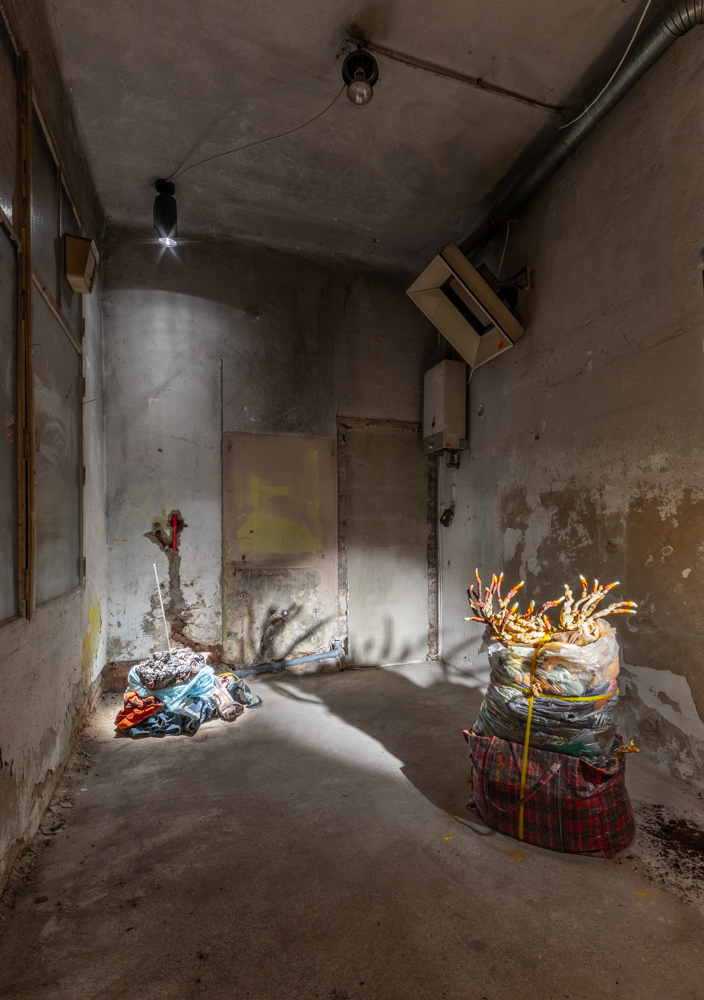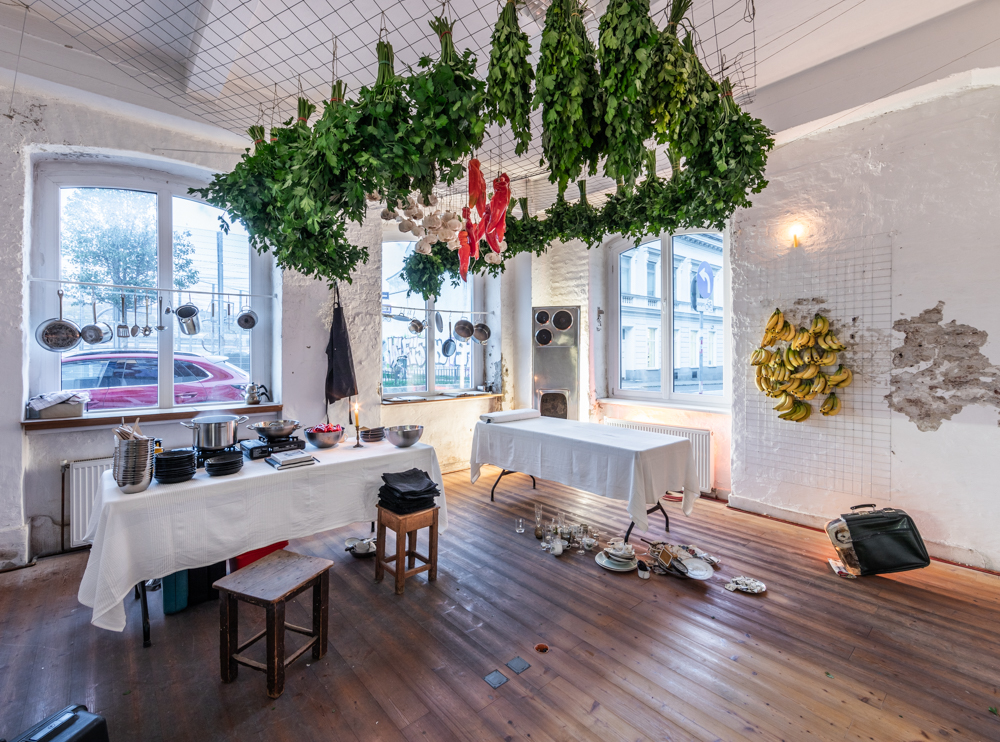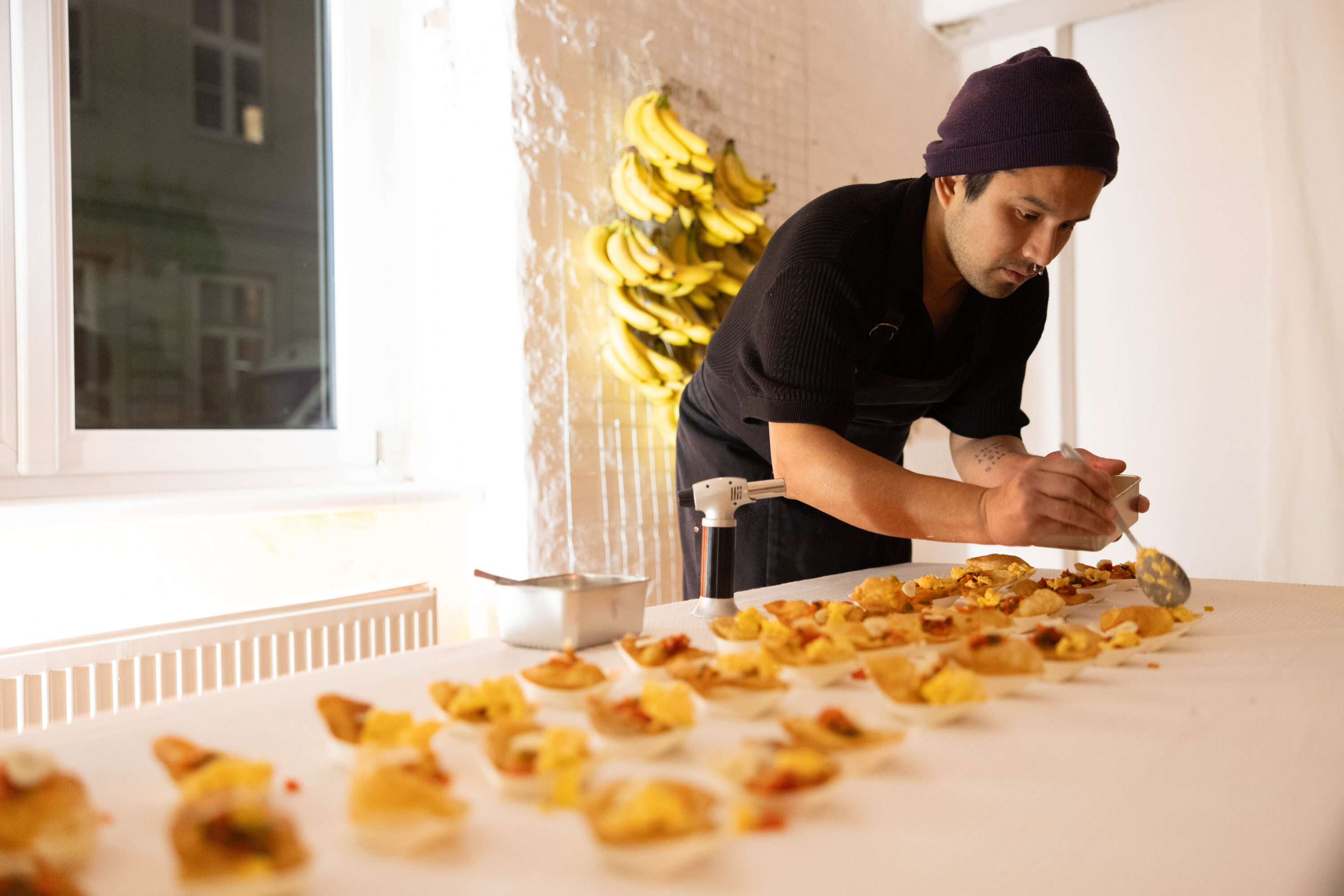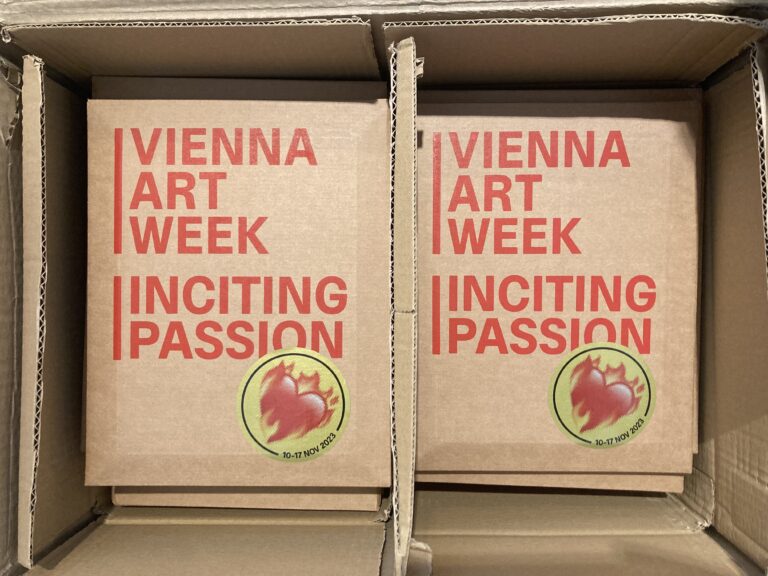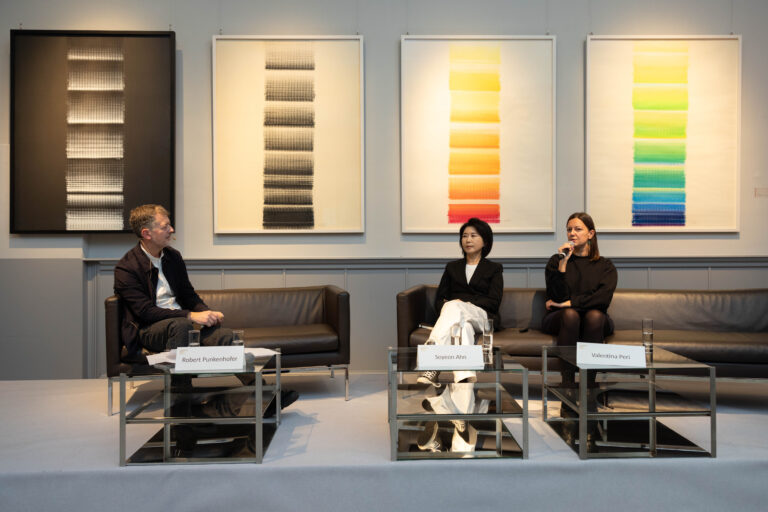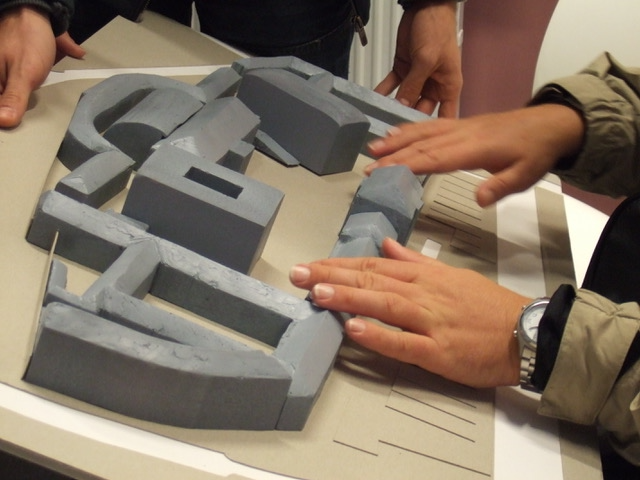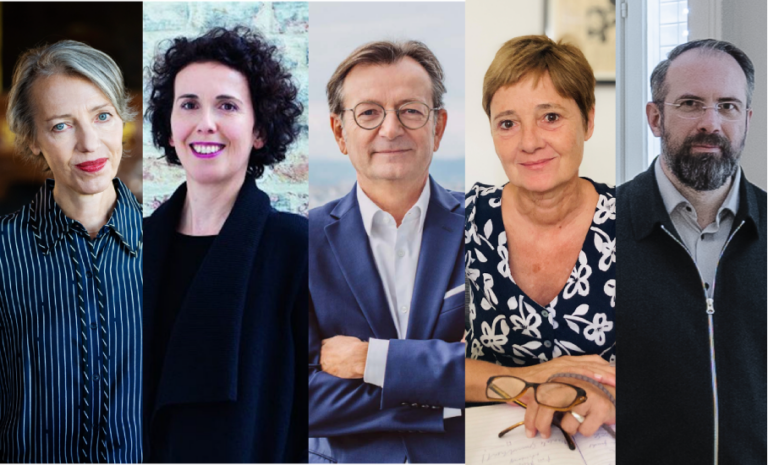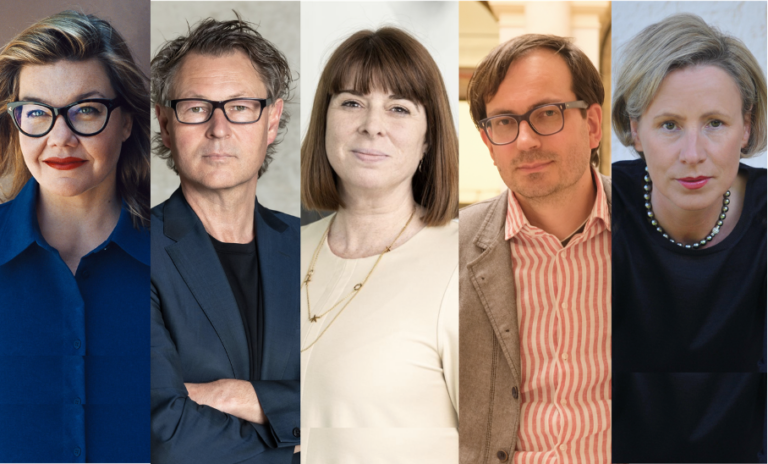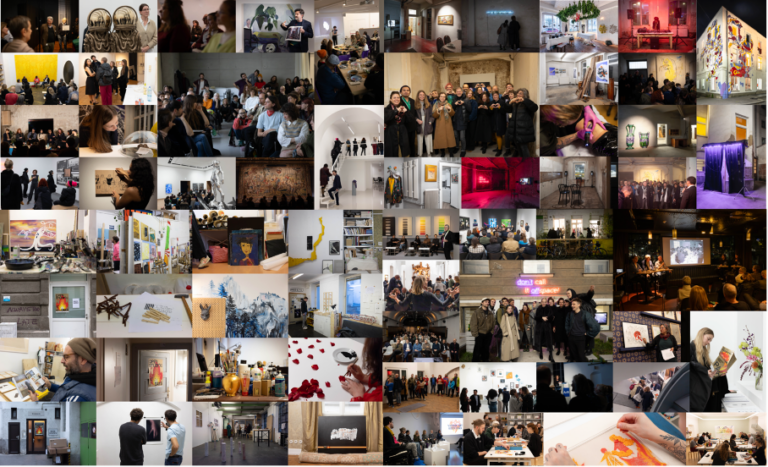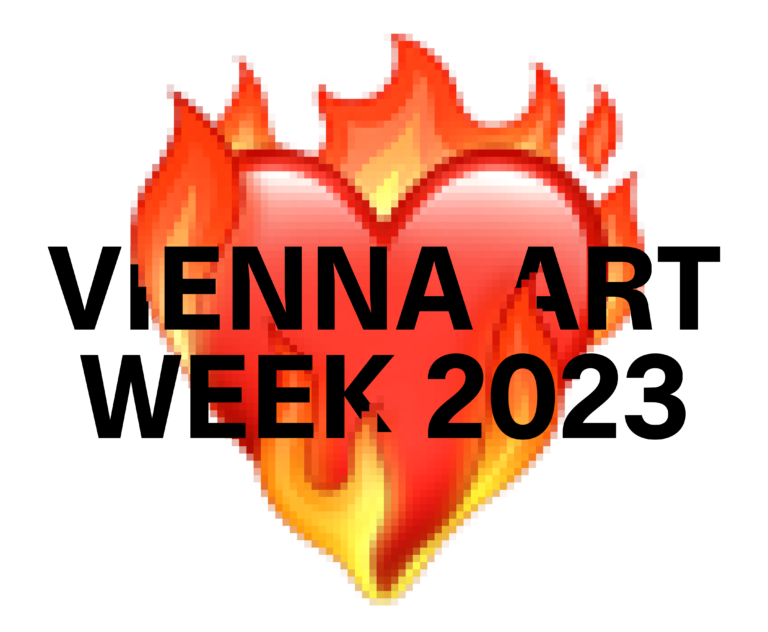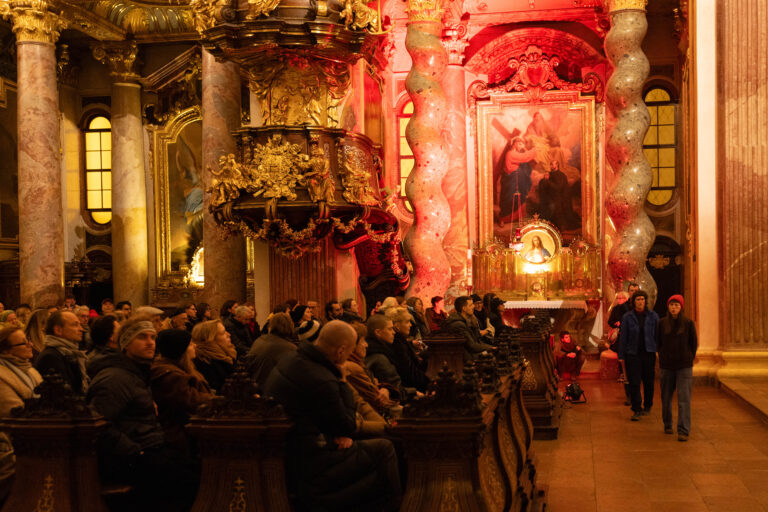House of INCITING PASSION – a review of the VIENNA ART WEEK 2023 exhibition
By Julia Hartmann and Robert Punkenhofer.

Exhibition view, House of INCITING PASSION, Foto: Wolfgang Thaler
Once again in the history of the festival, this year’s VIENNA ART WEEK exhibition took place in an abandoned – and soon to be demolished – building, this time in Vienna’s 15th district. Together with internationally renowned and up-and-coming artists from the Viennese art scene, the premises were explored weeks in advance and the artworks were placed in relation to the space.
The curatorial concept of the exhibition was based on this year’s festival motto, INCITING PASSION, and revolved around various facets of passion. Passion can be a driving force that inspires and motivates people to pursue their goals and desires with a radical level of commitment and dedication. Experiencing this strong feeling of enthusiasm yourself or igniting it in someone else can be pleasurable, but it can also be potentially destructive and dangerous – after all, the word passion derives from the Latin word for suffering.
Plato already believed that humans have a rational and an irrational soul: The first was associated with reason and logic, whereas the second was driven by desire and bodily sensations. It was along these lines that the ancient Greek philosopher suggested that all artists should be excluded from the pólis – in other words, from all political decisions – as they were too uncontrollable, emotional and passion-driven.
Artists have undoubtedly always been seismographs of their time and their works evoke an emotional response in the viewer – be it through overwhelming aesthetics or through stirring imagery ranging from romantic passion to nationalism.
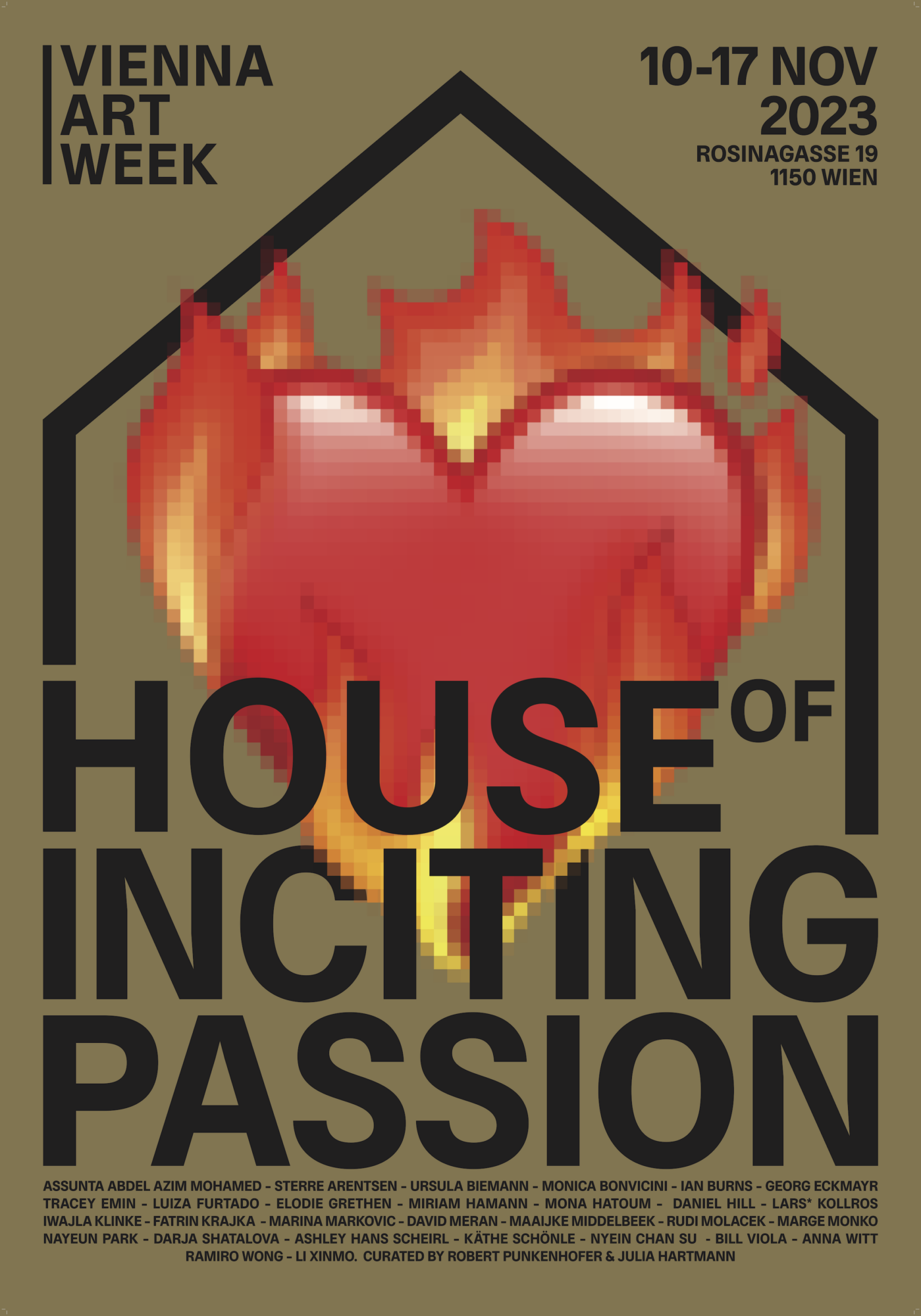
The exhibition in the “House of Inciting Passion” took up this spectrum. Works by around 30 artists from 18 countries were presented, which revolved around lust and desire, compassion and revulsion, public excitement and private emotions, the human touch and digital encounters, the rational and the irrational. Above all, the exhibition explored the power and complexity of feelings, also beyond heteronormative sexual identities and conservative notions of love, sex, romance, eroticism, lust and relationships – without leaving out the potentially destructive and dangerous side of passion.
An important arena for human passions today is the digital world, where much of our communication and relationships take place. The exhibition theme, a pixelated burning heart emoji, took this into account, and some of the works on display were also created in the digital age and space.
But let’s return to the exhibition space. Visitors were greeted by Luiza Furtado’s mural Colligated Arteries on the façade of the dilapidated building, whose ecstatic dancers led the way into the “House of Inciting Passion”. Upon entering the exhibition, visitors were first greeted by Käthe Schönle’s emotionally charged painting Fade into you, reminiscent of a Pietà, opposite Bill Viola’s video installation Silent Mountain, which silently captured the unrestrained emotions of two people caught between pain and agony. The curtains of Lars* Kollro’s Queer Phantasies 1-4 and The Hard Idea Of Consent were embroidered with motifs of various types of queer sex especially for the exhibition. Lars* also created a darkroom exclusively for the exhibition, in which all interactions were explicitly permitted – as long as they were consensual! Opposite, Monica Bonvicini’s neon work So Male, So Male denounced patriarchal structures in society and in the art world.
Numerous artists spoke in an intimate and poetic way about vulnerability, intimacy and interpersonal relationships. Tracey Emin, for example, dealt with the pain of love in her autobiographical poems Just let me love you / You must have hope / She lay there / I lay here / I can’t love anymore / Feel your touch, as did Iwajla Klinke in her photographic work Caladrius, which captured the pain of separation in the truest sense of the word – the outline of a lily was sewn into the skin of a friend abandoned by their partner without anesthetic. Mona Hatoum addressed the involuntary separation from loved ones caused by war in her video work Measures of Distance. Ramiro Wong’s dinner performance Celebrations: Rehearsals for a theater of hospitality created a space to connect with unknown people and experience peaceful togetherness.
In I hope he doesn’t mind, Darja Shatalova made an ironic attempt to cast the emotional bond between two people into statistics and reflected human interaction in private and public space, as well as its limitations, in her prints Beziehungstabelle (C357) / Zeitgrafik (C079).
Romanticism was, of course, not to be missed: David Meran presented his and his partner’s handprints in reference to Michelangelo’s The Creation of Adam in I look, I want nothing but to hold your hands. Marge Monko, who explored contemporary forms of expressing love in Dear D, showed just how complicated romantic rapprochement can be in the digital age. Rudi Molacek created a sea of flowers in The Gardens of Rudi, some of which withered over the course of the exhibition. Assunta Abdel Azim Mohamed questioned the romantic associations associated with flowers in her work Malicious Blossoms. Fatrin Krajka’s composition Khronos created a similarly eerie and melancholy atmosphere, inviting visitors in the desolate surroundings of a neglected apartment to project their own longings and desires onto the train tracks in the background.
An exciting aspect of the exhibition design was the history of the building, part of which housed the historic Fanni Lemmermayer wool factory, where clothing was once made from alpaca wool. It seemed as if the factory had been abandoned in a hurry: lots of equipment, tools and furniture were left behind, along with used coffee cups, folders with company documents, posters, yarns and fabric remnants.
This unique environment was left unchanged in a deliberate curatorial decision and the artworks were placed among the dust, tools and pin-up posters. In some places, it was necessary to take a closer look in order to distinguish between art and relics from the workshop. Ian Burns’ critique of the blunt consumption of technologized society, The Trials And Tribulations Of The Tools Of Distance Relationships, for example, was concealed in the middle of an abandoned office landscape.
Passion in the field of tension between social norms and heteropatriarchal structures was the subject of Daniel Hill’s work, whose body in A series of confinement literally tried to break out of its box and thus escape the desire to belong and free itself from social categories or labels; Elodie Grethen resisted the male gaze with her erotically charged photographs entitled Oh my darling, which she placed near the pin-up posters (already present in the workshop); Anna Witt created a performative monument to the female workers of the street prostitution on Kurfürstenstraße in Berlin with Beat body and the queer-feminist arthouse film by Ashley Hans Scheirl 1/2 frogs fuck fast already broke with heteronormative viewing habits back in the 1990s.
To come back to the beginning: Plato’s idea of the passionate artists who should be excluded from the political sphere was taken up in different ways by some of the artists in the exhibition – on the one hand, Plato’s idea inspired Sterre Arentsen to create the photographic works The rational and irrational, each of which loosely symbolizes the rational and the irrational and is accompanied by poetic texts.
On the other hand, Plato’s proposal to banish artists takes on a completely new and very topical meaning with regard to totalitarian regimes, such as those in Iran, Russia, Cuba, Turkey or China. There, artists who express their criticism of political oppression are very often persecuted or directly expelled from their pólis. Another focus of the exhibition was therefore the connection between emotional strength and compassion, which drives people to act together, especially in challenging situations.
The vases A vase of fighters / A vase for freedom / A vase of resistance by Nayeun Park depicted scenes from the Iranian revolution, while the photographs by Burmese artist Nyein Chan Su represented artists who were excluded from the political sphere because of their critical stance against the regime.
The aspect of power and abuse in the name of passion was addressed by the artist Li Xinmo in the works The monologues / The story of the mirror / Lu ping, and also by Ursula Biemann in her film Writing Desire. In it, the artist deals with the sex and marriage market that emerged on the internet in the 1990s. In her long-term project The Arrangement, Marina Marković examined submission and dominance in relation to the female body – and had the VIENNA ART WEEK logo tattooed on her body in a live performance during the exhibition opening.
In The ability to perceive: No man’s land, Georg Eckmayr addressed the passion for science, but also the possible manipulations associated with it, while Miriam Hamann’s On the measure of the earth highlighted the passion for acquiring knowledge as the central driving force behind our actions. In turn, scientific findings inspired Maaijke Middelbeek’s multimedia installation Wardrobe wasteland: A tale of metamorphosis, which shed light on the subterranean networks of relationships and the great potential of fungi in times of the climate crisis.
Thanks to the combined enthusiasm of the artists, the visitors and everybody involved, the building, which had been condemned to demolition, came back to life. A temporary space of art reflection was created that posed the visitors a final question upon leaving: “What’s your passion?”.
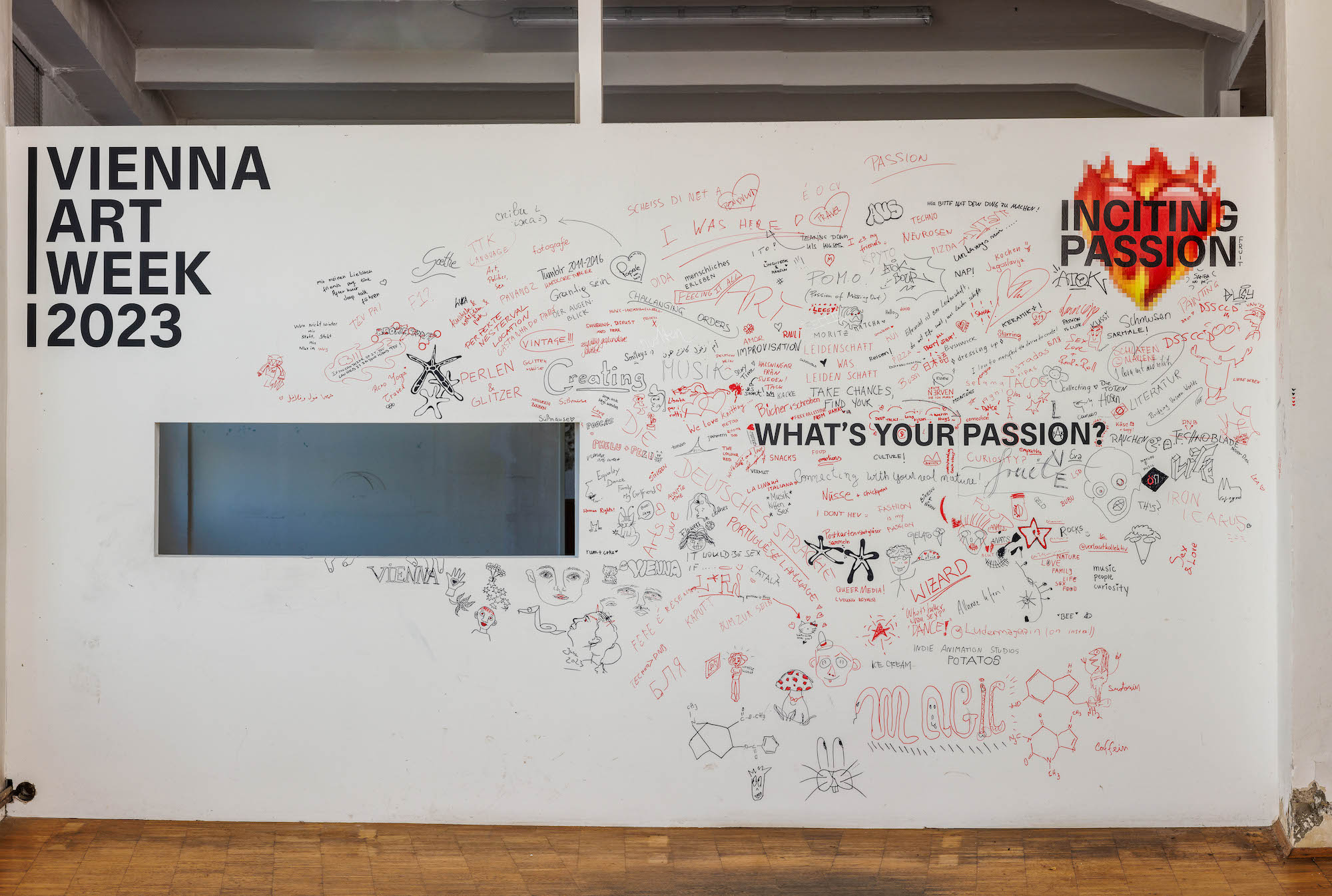
Foto: Rainer Fehringer

